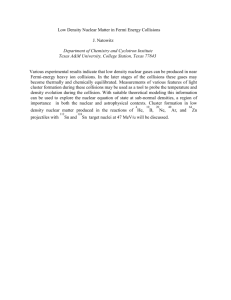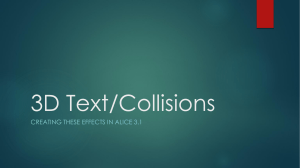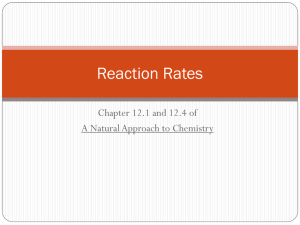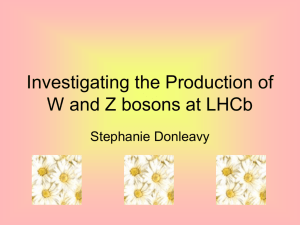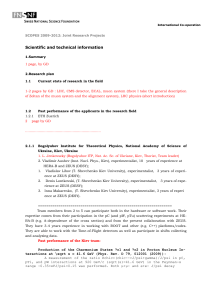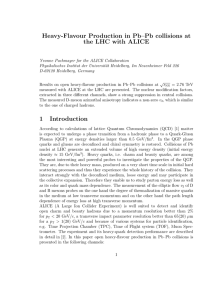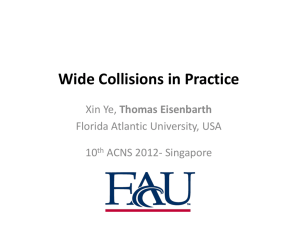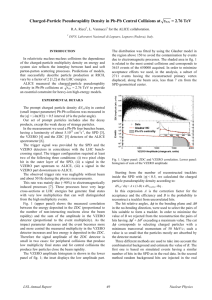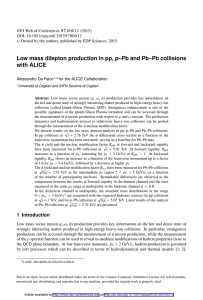The investigation of the nuclear medium under extreme conditions of
advertisement
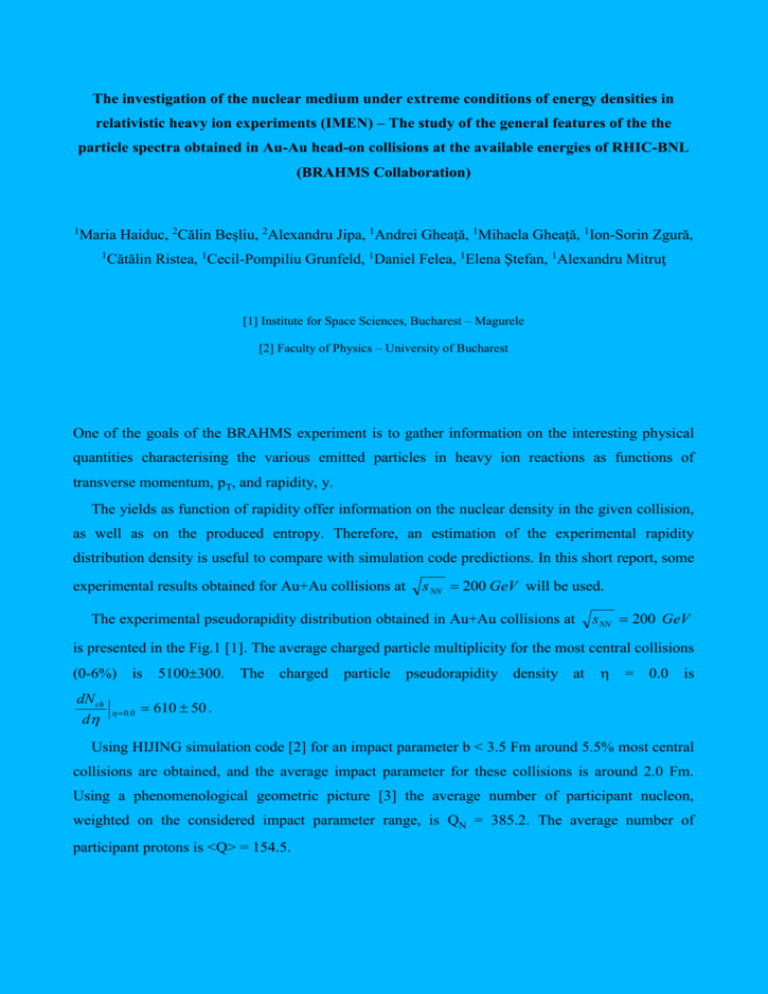
The investigation of the nuclear medium under extreme conditions of energy densities in relativistic heavy ion experiments (IMEN) – The study of the general features of the the particle spectra obtained in Au-Au head-on collisions at the available energies of RHIC-BNL (BRAHMS Collaboration) 1 Maria Haiduc, 2Călin Beşliu, 2Alexandru Jipa, 1Andrei Gheaţă, 1Mihaela Gheaţă, 1Ion-Sorin Zgură, 1 Cătălin Ristea, 1Cecil-Pompiliu Grunfeld, 1Daniel Felea, 1Elena Ştefan, 1Alexandru Mitruţ [1] Institute for Space Sciences, Bucharest – Magurele [2] Faculty of Physics – University of Bucharest One of the goals of the BRAHMS experiment is to gather information on the interesting physical quantities characterising the various emitted particles in heavy ion reactions as functions of transverse momentum, pT, and rapidity, y. The yields as function of rapidity offer information on the nuclear density in the given collision, as well as on the produced entropy. Therefore, an estimation of the experimental rapidity distribution density is useful to compare with simulation code predictions. In this short report, some experimental results obtained for Au+Au collisions at s NN 200 GeV will be used. The experimental pseudorapidity distribution obtained in Au+Au collisions at sNN 200 GeV is presented in the Fig.1 [1]. The average charged particle multiplicity for the most central collisions (0-6%) is dN ch d 0.0 5100300. The charged particle pseudorapidity density at = 0.0 is 610 50 . Using HIJING simulation code [2] for an impact parameter b < 3.5 Fm around 5.5% most central collisions are obtained, and the average impact parameter for these collisions is around 2.0 Fm. Using a phenomenological geometric picture [3] the average number of participant nucleon, weighted on the considered impact parameter range, is QN = 385.2. The average number of participant protons is <Q> = 154.5. Fig.1 - Pseudorapidity distribution in Au-Au collisions at s NN 200 GeV for different collision centralities. To have additional information on the influence of the possible new interaction mechanisms in the participant region it is important to analyze the behaviour of the p p ratio at the same rapidity, but with different average transverse momenta. In the table I are included the p p ratio values, for y = 1, obtained in Au-Au collisions at s NN 130 GeV . Table 1 - p p ratio at the same rapidity and different average transverse momenta. <pT> [GeV/c] p p p p exp HIJING p p UrQMD 0.500 0.65 0.68 0.27 0.800 0.76 0.79 0.26 1.100 0.60 0.69 0.26 1.500 0.66 0.67 0.50 A deeper analysis of the experimental results at different angles is necessary. Estimations of the slope parameter for transverse momentum spectra will be available soon. References: [1]. J.J.Gaardhoje – Meeting at Ecole Polytechnique, Paris, France, 4.IX.2001 [2]. M.Gyulassy, Xian-Nian Wang – Preprint LBL, LBL-34246(2000) - HIJING Code [3]. Al.Jipa et al – Romanian Reports in Physics 52(8-9), (2000) 599-607
